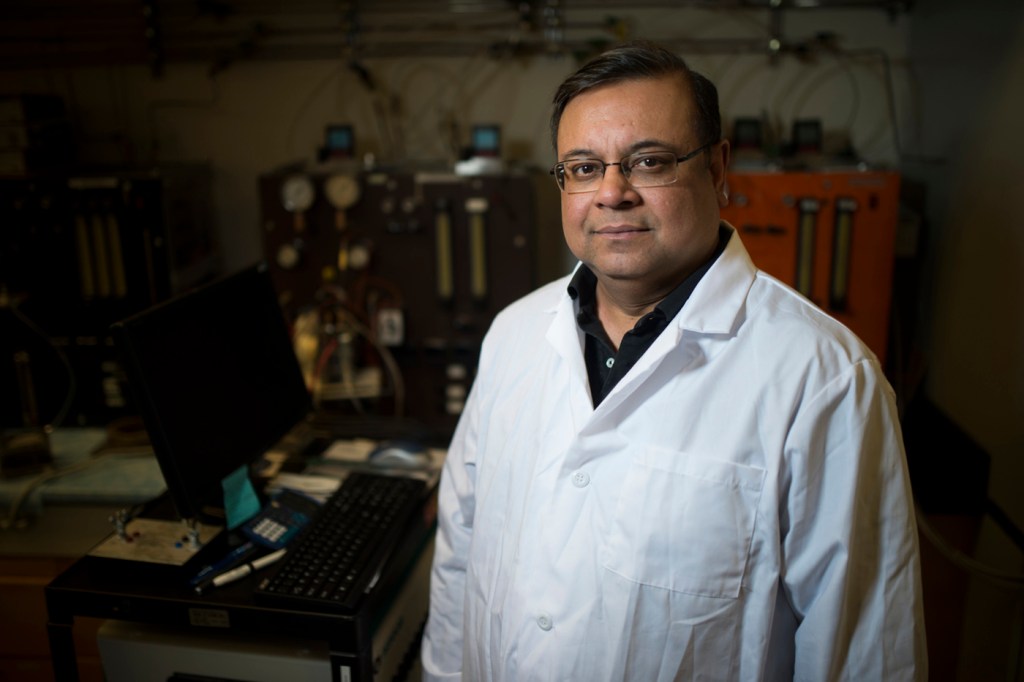Fuel-efficient cars are expensive. These researchers are trying to make them more affordable.

Two Northeastern researchers have received a $1 million grant from the Department of Energy to develop technology to lower the cost of fuel cells for energy-efficient cars.
Sanjeev Mukerjee and Qingying Jia are among 28 groups of scientists who have received DOE grants to research and develop hydrogen and fuel cell technologies.
“The expectation is that this project will lead to new technology and enable the commercialization of fuel-efficient cars,” said Mukerjee, a Distinguished Professor of Chemistry and Chemical Biology who directs the Northeastern University Center for Renewable Energy Technology.
Fuel cells for renewable energy vehicles currently use platinum to convert hydrogen and oxygen into water and energy. But platinum is expensive and scarce.
Mukerjee and Jia want to use iron, which, they say, is low-cost, plentiful, and better for the environment.
They believe that this configuration can cut carbon emissions and reduce the cost of renewable energy vehicles.
“If a car running on fuel cells is more expensive than a regular car, then no one will buy it,” Jia said.
Mukerjee and Jia will work with Northeastern students and post-doctoral researchers to develop the technology. They will collaborate with scientists at the Department of Energy’s Lawrence Berkeley National Laboratory and Doosan Fuel Cell America, a company in Connecticut that manufactures fuel cells.
Jia hopes that the team’s technology will help to reduce the nation’s dependence on gas, which he described as “a limited resource that’s subject to inflation.”
“The United States must lead the world in transitioning away from fossil fuels to a zero greenhouse emission future,” he said. “As part of this project, we hope we can get rid of that dependence by using hydrogen and oxygen.”





